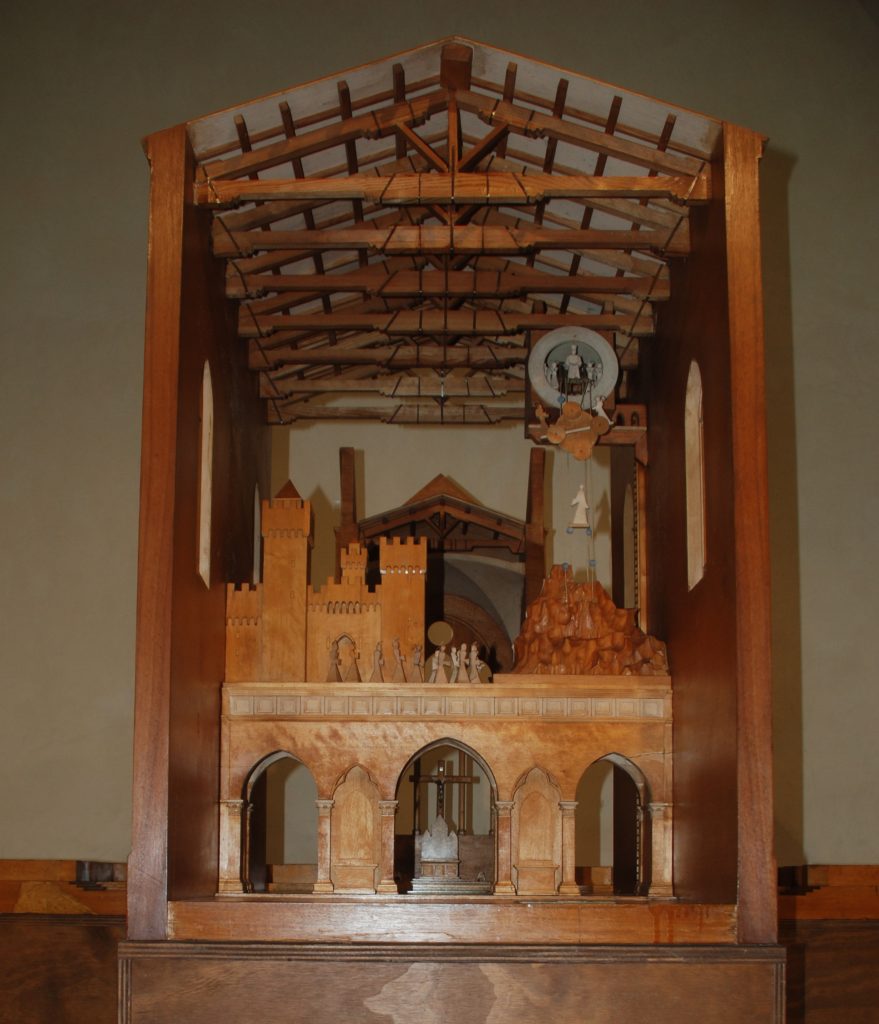- Home
- /
- Parco Mediceo di Pratolino
- /
- The Medici theatrical mechanisms...
- /
- The Medici theatrical mechanisms...

The “mechanism” in the Church of Santa Maria del Carmine
Interpretative model of the “mechanism” designed by Filippo Brunelleschi, built in the Church of Santa Maria del Carmine for the Ascension of Christ. 16th century.
A project by Ludovico Zorzi and Cesare Lisi, constructed by Cesare Lisi – 1975.
Scale 1:25
The spectacle of the sacred representation of the Ascension of Christ was set up in the Church of Santa Maria del Carmine of the Compagnia delle Laudi, known as Santa Agnese. From the early decades of the fifteenth century, and almost always repeated every year with a great deal of apparatus, in the second half of the century, the set-up underwent some innovations in its technical mechanisms. On the testimony of Vasari, who describes the new ‘machine’, attributing it to Cecca, it was possible to build the interpretive model (…).
In the convent Church of Santa Maria del Carmine, the existing partition, the architectural element that separated the nave, served as a stage. On it rested the constructions showing the two designated places: on the left the city of Jerusalem (from where, at the beginning, Jesus, the Virgin Mary and the Apostles came) and to the right, the Mount of Olives. To add scenic dimension to the ascension of Christ, some cables had been stretched, which connected the mountain to an overhead wooden platform hanging from the roof trusses, depicting the Empyrean with the Lord and rejoicing angels. When the time came, the young man who played Jesus moved behind the mountain, where, hidden from
the audience, he attached himself to the taut ropes, and winches positioned on high hoisted him slowly simulating the ascent to Heaven. At the same time, some similar devices enabled two accompanying angels to descend to meet Jesus; lying on cotton wool clouds (in the model the round panels are shown where the cotton wool was applied), they flanked him in the last stretch of the ascent. A sudden darkness veiled the technical operation (necessary for the stage movements but not actually part of the divine ‘miracle’) of the passage of Christ from the machine to the platform of Heaven, where the Son, according to the formula of the Credo, appeared seated at the right hand of the Father.
The music and choruses completed the evocative drama of the moment, in this as in other representations.



